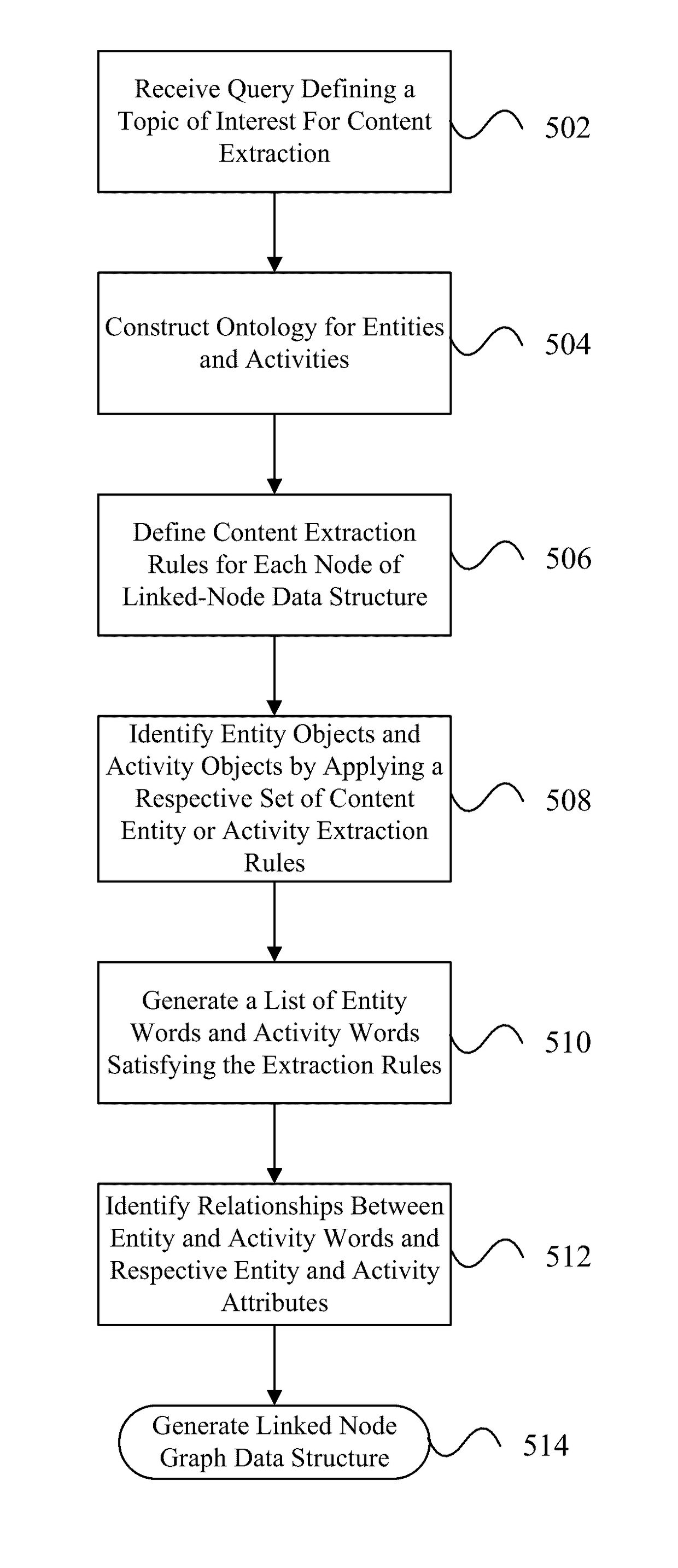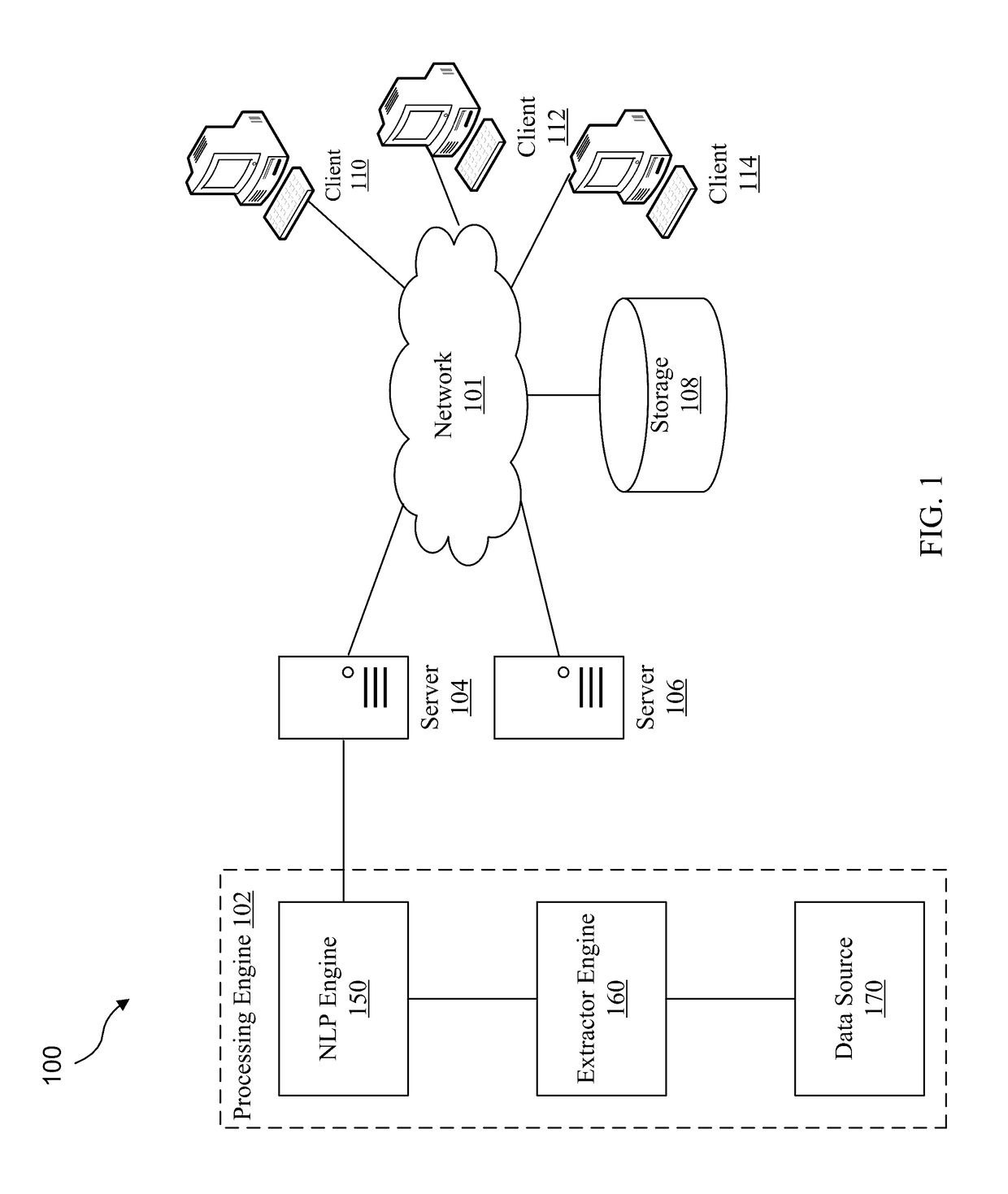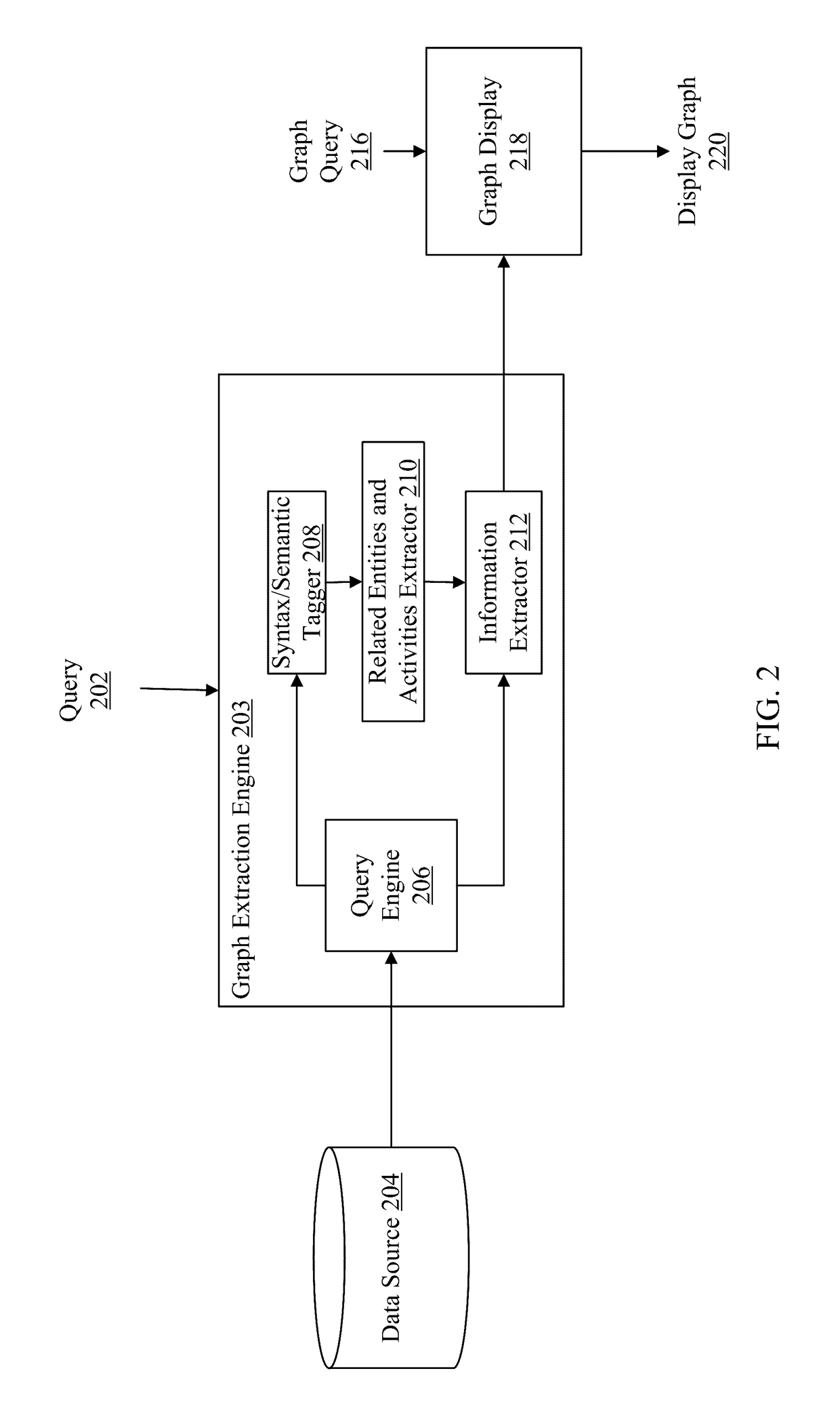System and method of extracting linked node graph data structures from unstructured content
a graph and data structure technology, applied in the field of computer science, artificial intelligence, linguistics, can solve the problems of large amount of unstructured data within the digital world, gap between the majority of data and the type of data, and large amount of unstructured data created by humans
- Summary
- Abstract
- Description
- Claims
- Application Information
AI Technical Summary
Benefits of technology
Problems solved by technology
Method used
Image
Examples
Embodiment Construction
[0021]As used herein, the term Natural Language Processing (NLP) is the semantic and syntactic annotation (tagging) of data, typically unstructured text. Syntactic annotation is based on grammatical parts-of-speech and clause structuring. An example of syntactic tagging might be: The / determiner quick / adjective brown / adjective fox / noun. Semantic annotation is based on dictionaries that contain data relevant to the domain being parsed. An example of syntactic tagging might be: The quick brown fox / mammal Annotation (tagging) is a form of discovery. Tags are essentially a form of meta-data associated with unstructured text. An ultimate purpose of tagging is the formulation of structure (intelligence for text mining and analytics) within unstructured data or content.
[0022]The system disclosed herein is a configurable Semantic NLP Extraction platform that automatically extracts linked node graph data structures from unstructured content. These data structures enable computer systems to qu...
PUM
 Login to View More
Login to View More Abstract
Description
Claims
Application Information
 Login to View More
Login to View More - R&D
- Intellectual Property
- Life Sciences
- Materials
- Tech Scout
- Unparalleled Data Quality
- Higher Quality Content
- 60% Fewer Hallucinations
Browse by: Latest US Patents, China's latest patents, Technical Efficacy Thesaurus, Application Domain, Technology Topic, Popular Technical Reports.
© 2025 PatSnap. All rights reserved.Legal|Privacy policy|Modern Slavery Act Transparency Statement|Sitemap|About US| Contact US: help@patsnap.com



